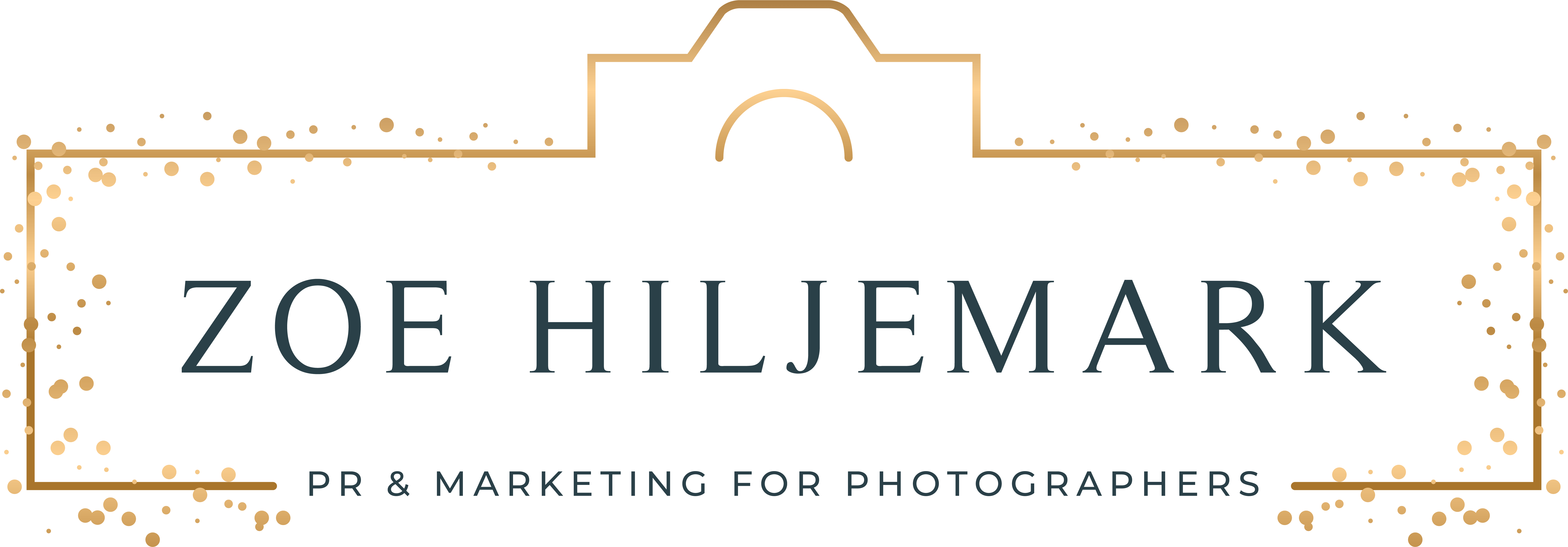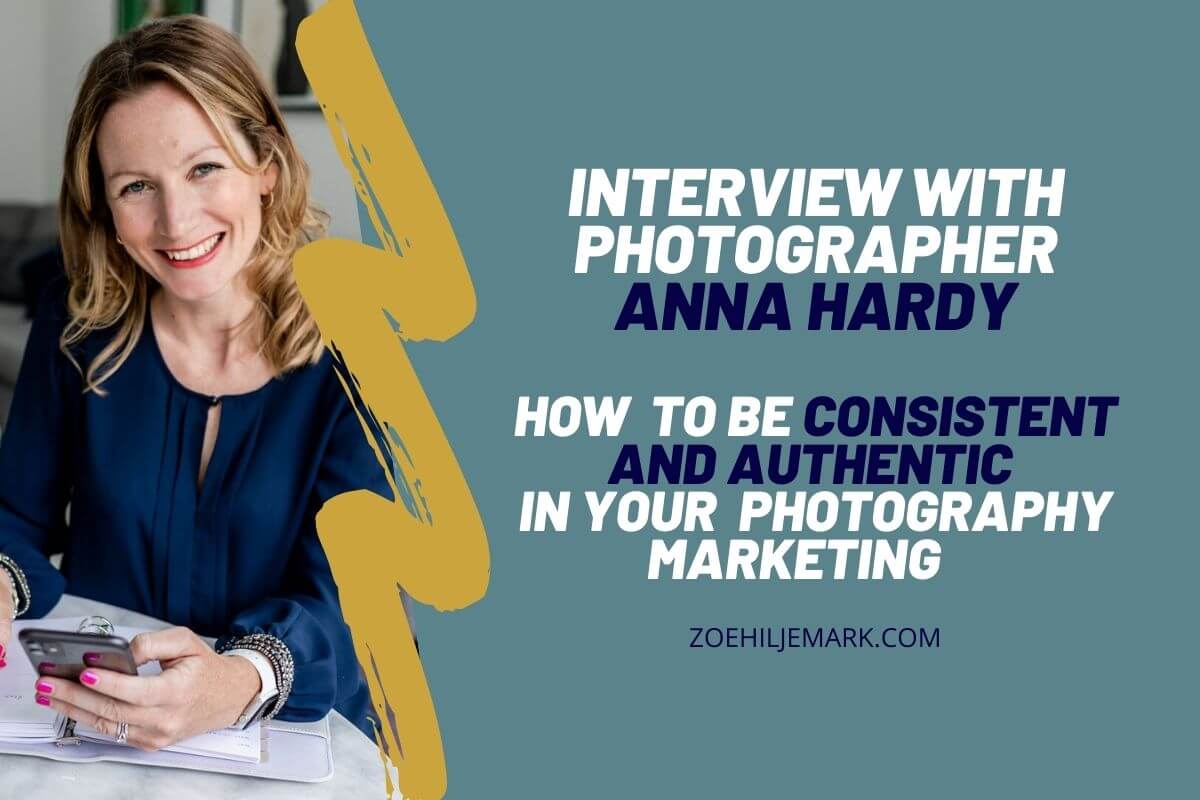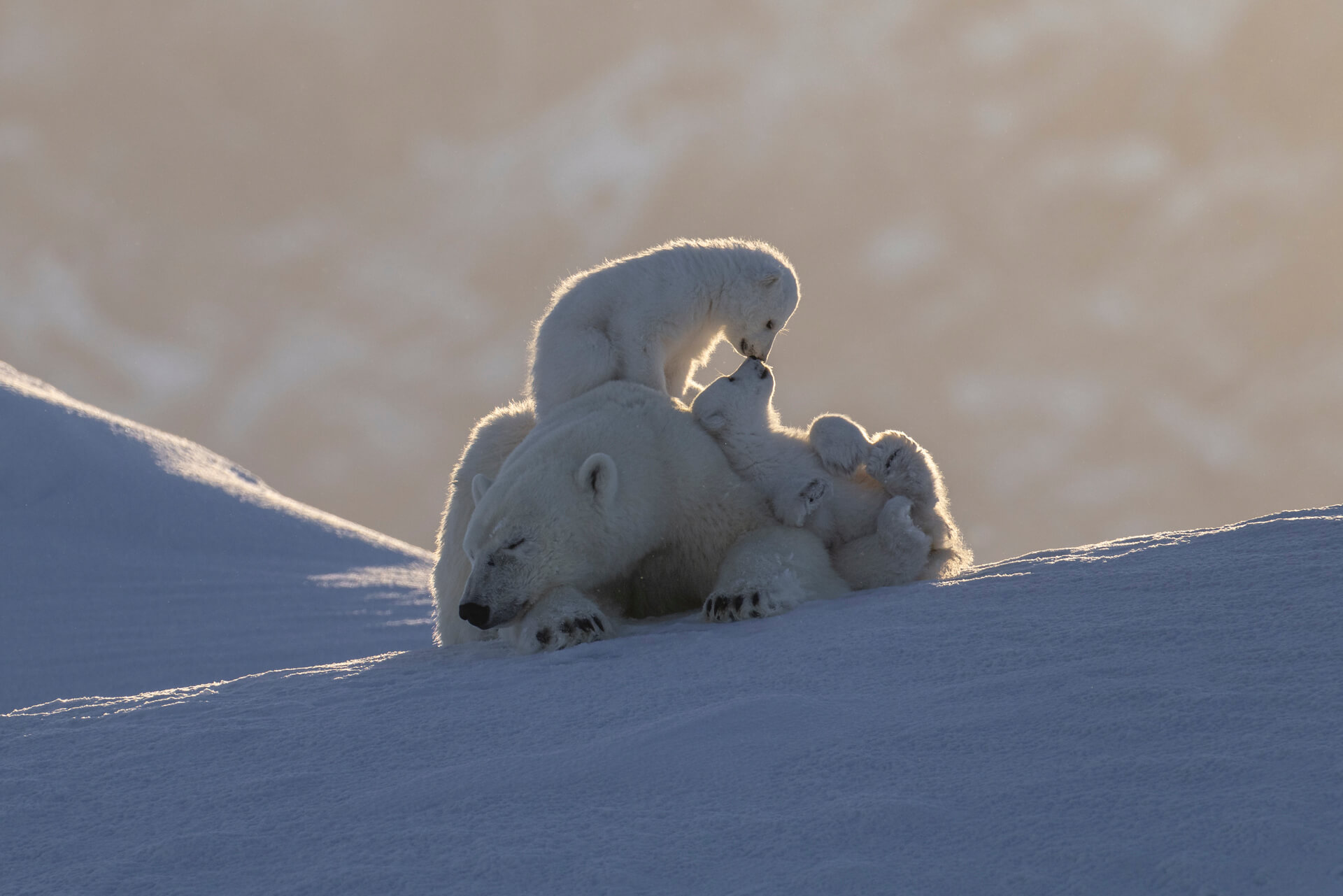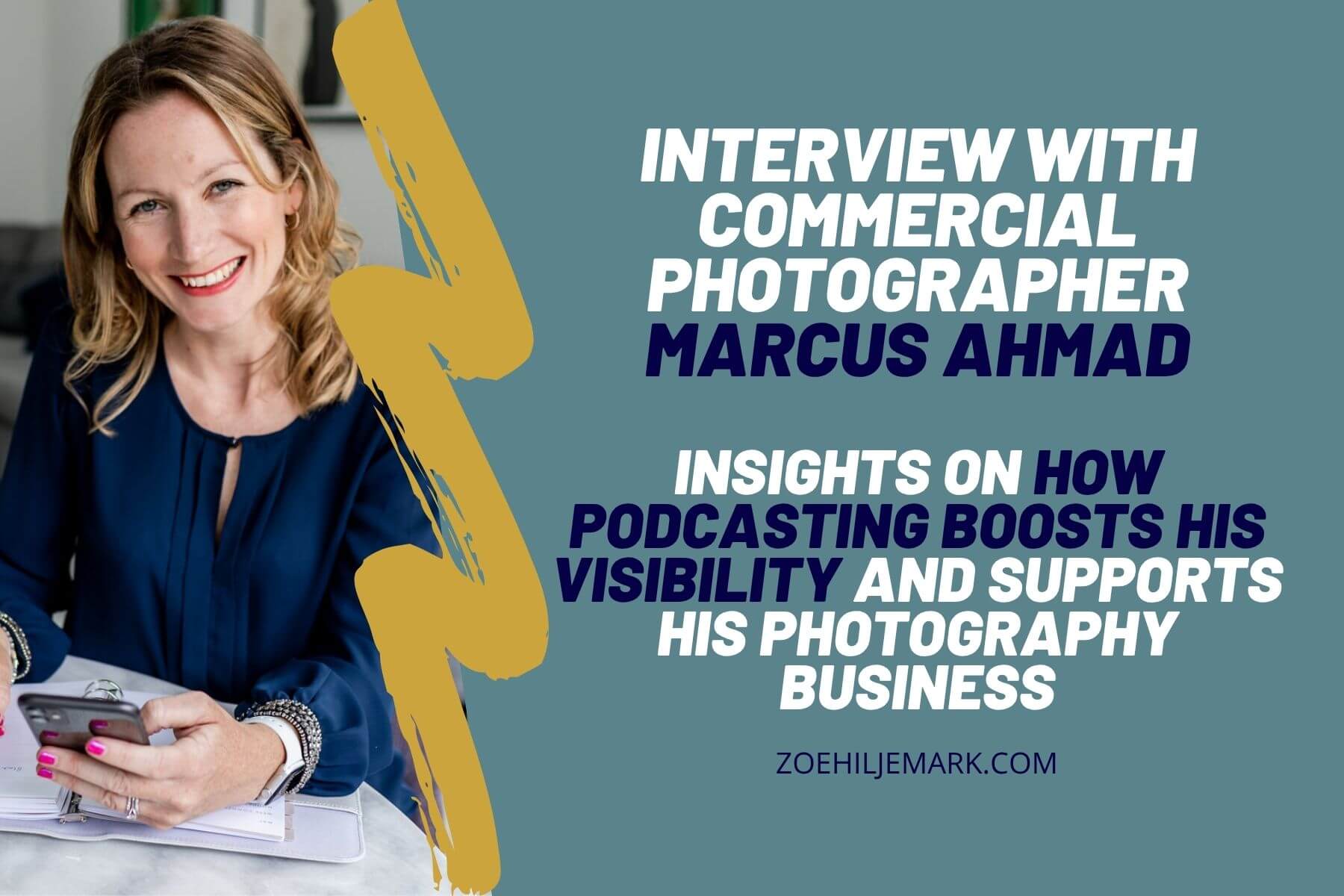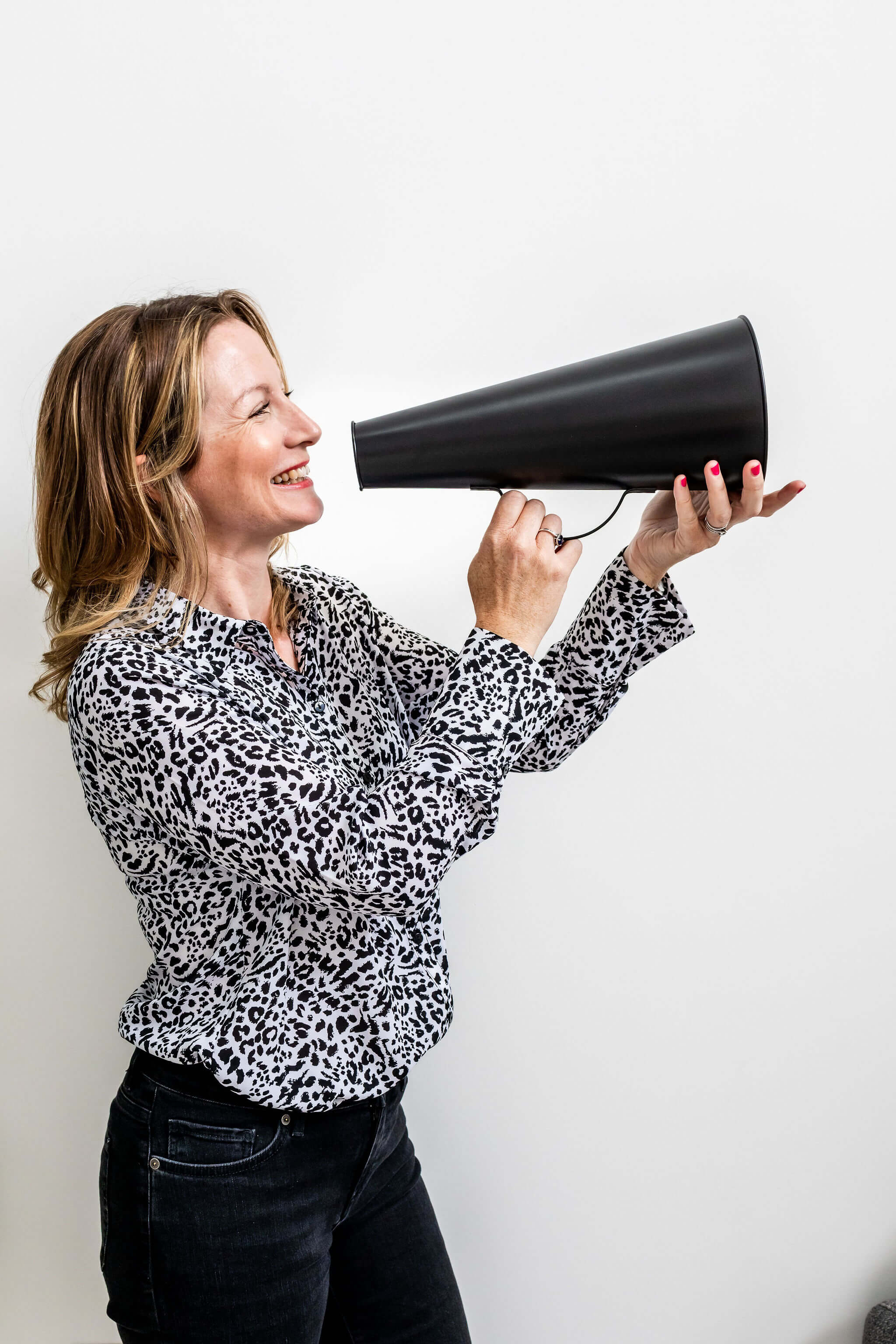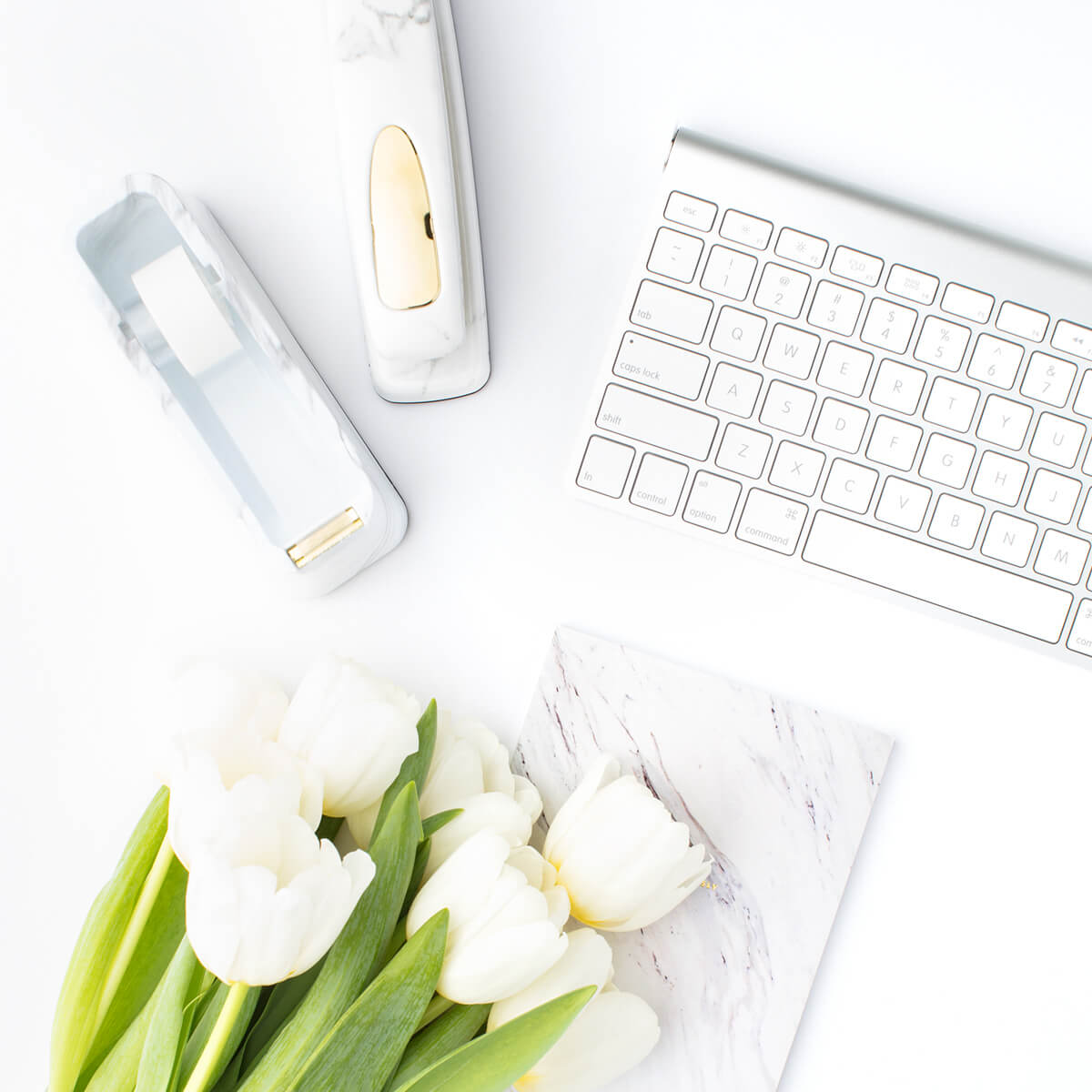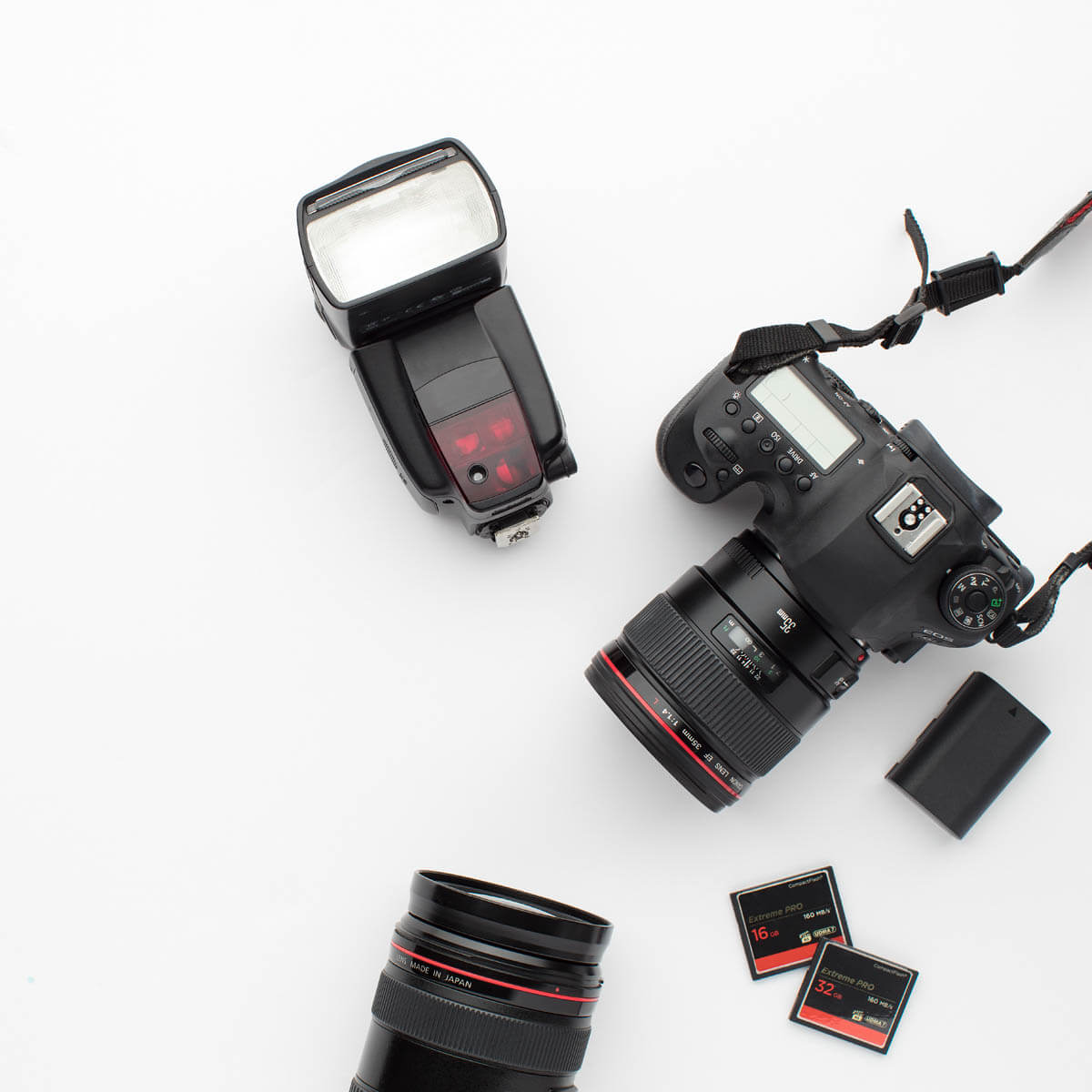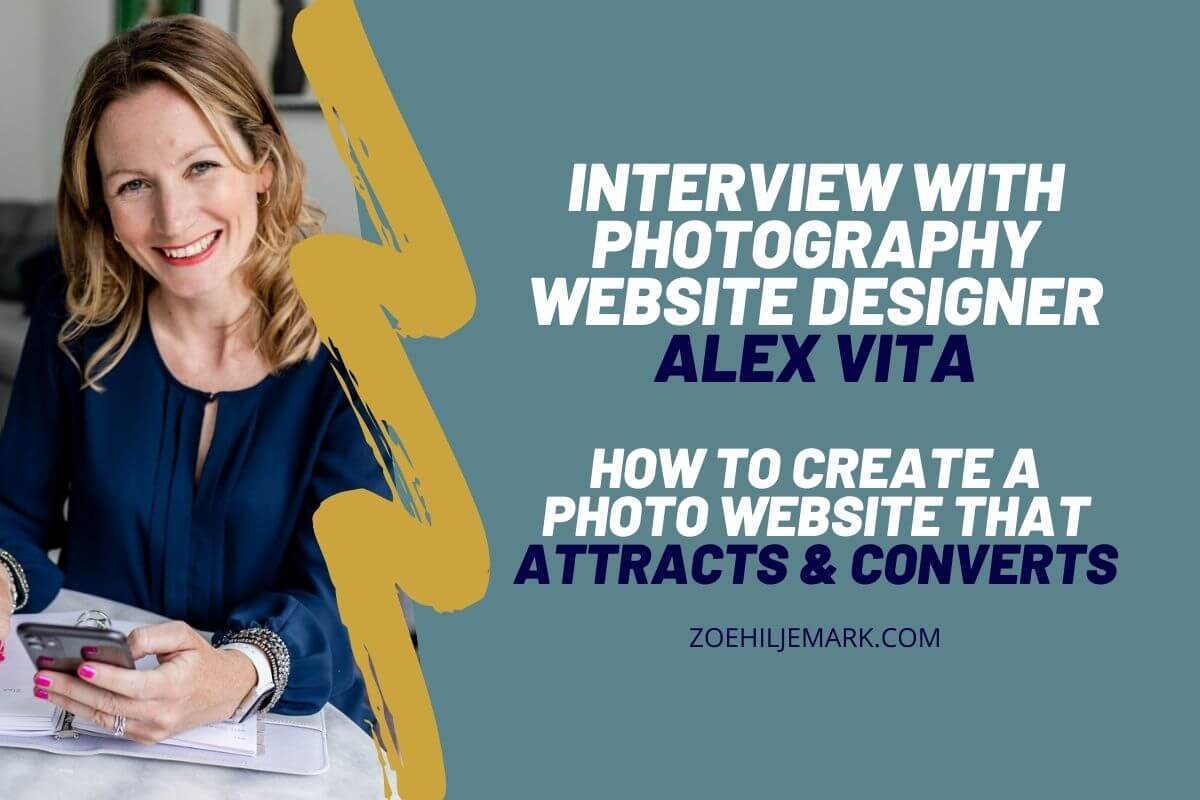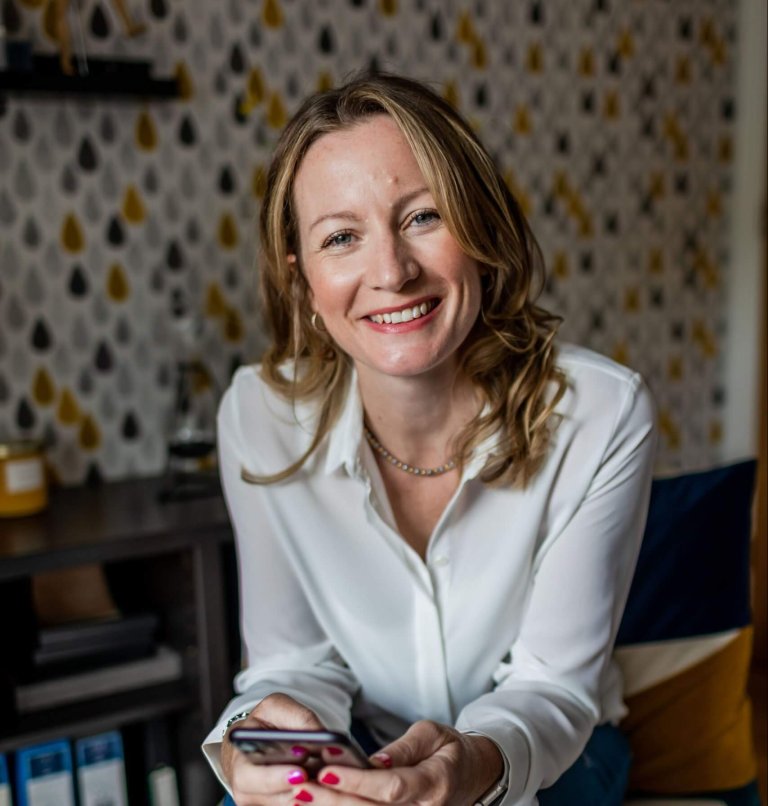Interview With Anna Hardy: Tips On Consistent And Authentic Photo Marketing
This autumn, I started a new photographer interview series featuring long-established and successful photographers working in a variety of genres. This is the fifth and penultimate interview in this first season. I hope you enjoy it!
Click this link or on the video preview below to listen to or watch my recent chat with Anna Hardy. Alternatively, you can scroll down to read the full transcript.
Introducing Anna Hardy
If you’ve not come across Anna before, she is a Manchester-based portrait photographer renowned for her work with families across the Northwest of England.
Her photography has been featured in notable publications like Harper’s Bazaar and Digital Photographer Magazine, to name a few, and she has been a professional photographer for over 17 years.
Throughout this article, you can also see examples of her work. Visit her website for more.
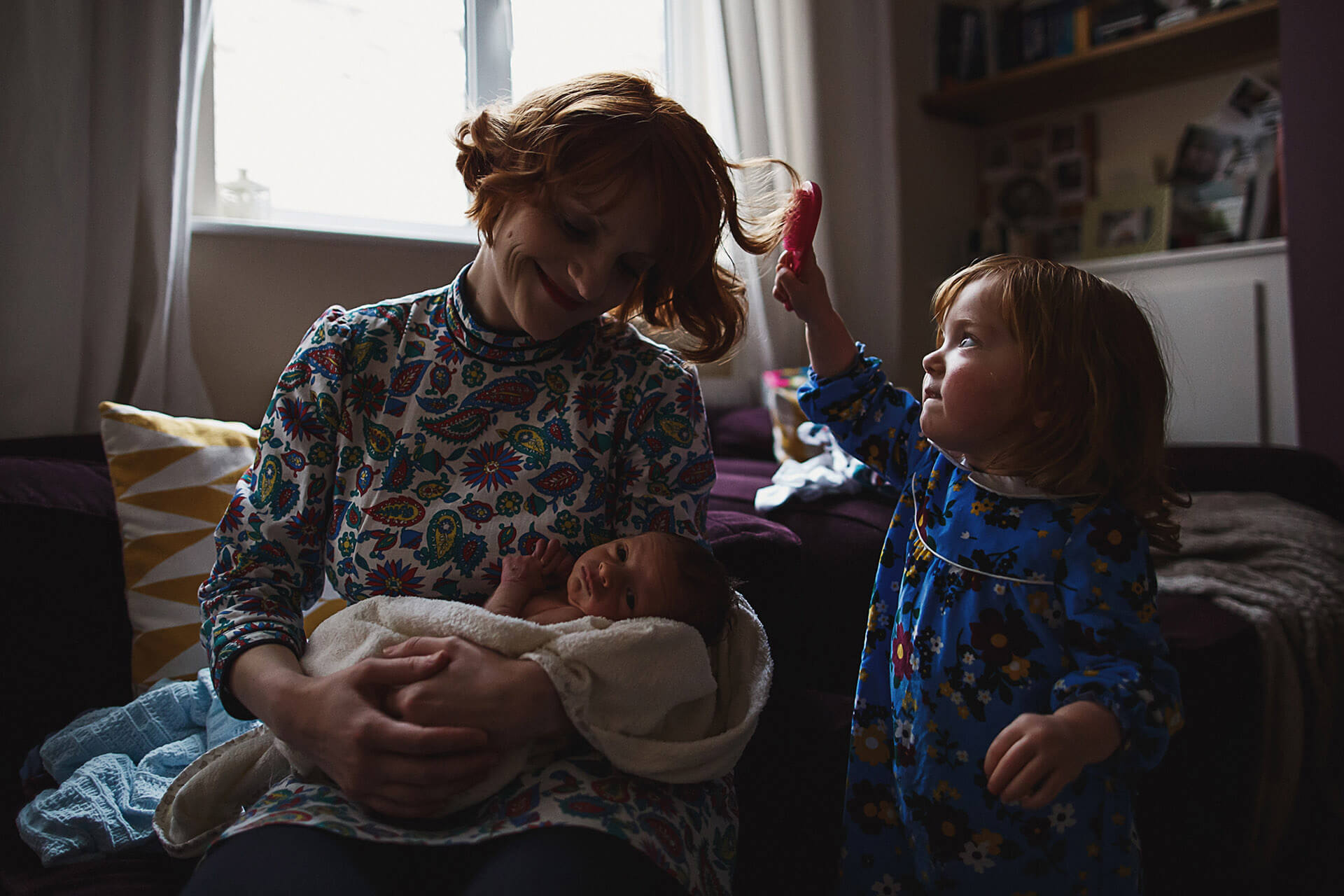
Teacher to Professional Photographer and Mentor
During the interview, Anna (pictured below) discusses with me her journey from being a secondary school English teacher to becoming a top family photographer.
She reveals how she accidentally fell into photography, how she navigated the transition from teaching. It seems she found her niche – in creating documentary-style family portraits – at a time when this was a new and exciting genre with lots of potential. She has since firmly become a leading voice in this genre of photography.
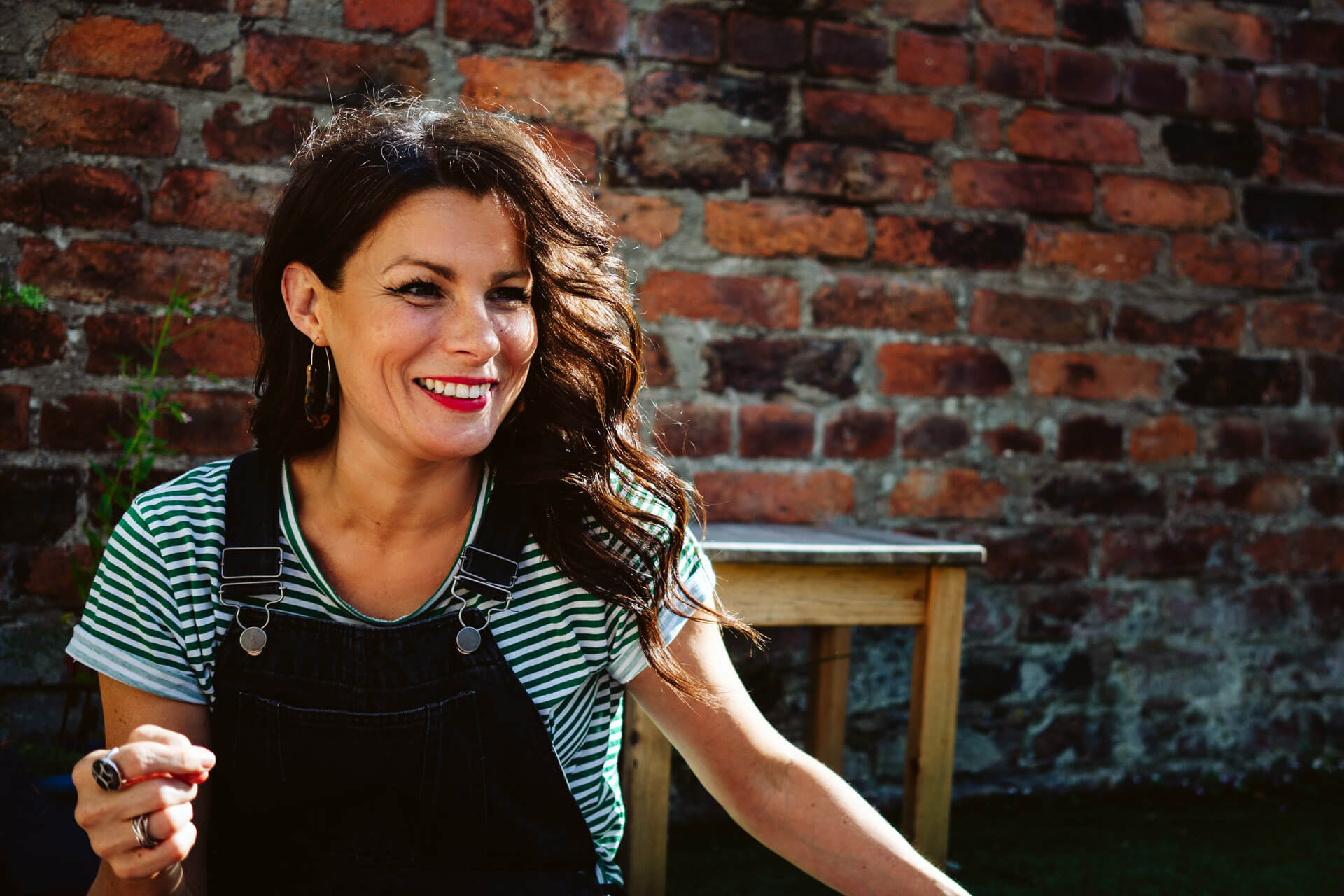
Anna’s secrets to marketing consistently
In this fun and frank conversation, Anna reveals the marketing strategies and channels she uses within her photography business, and how she maintains consistency when juggling many priorities as a business owner and mum.
We shared a few laughs as we chatted about the relatable pressures of being mumpreneurs, and talked about our shared commitment to SEO, content and PR over and above social media marketing.
She also talks about the importance of building and connecting with an audience, and her methods for staying consistent with content creation.
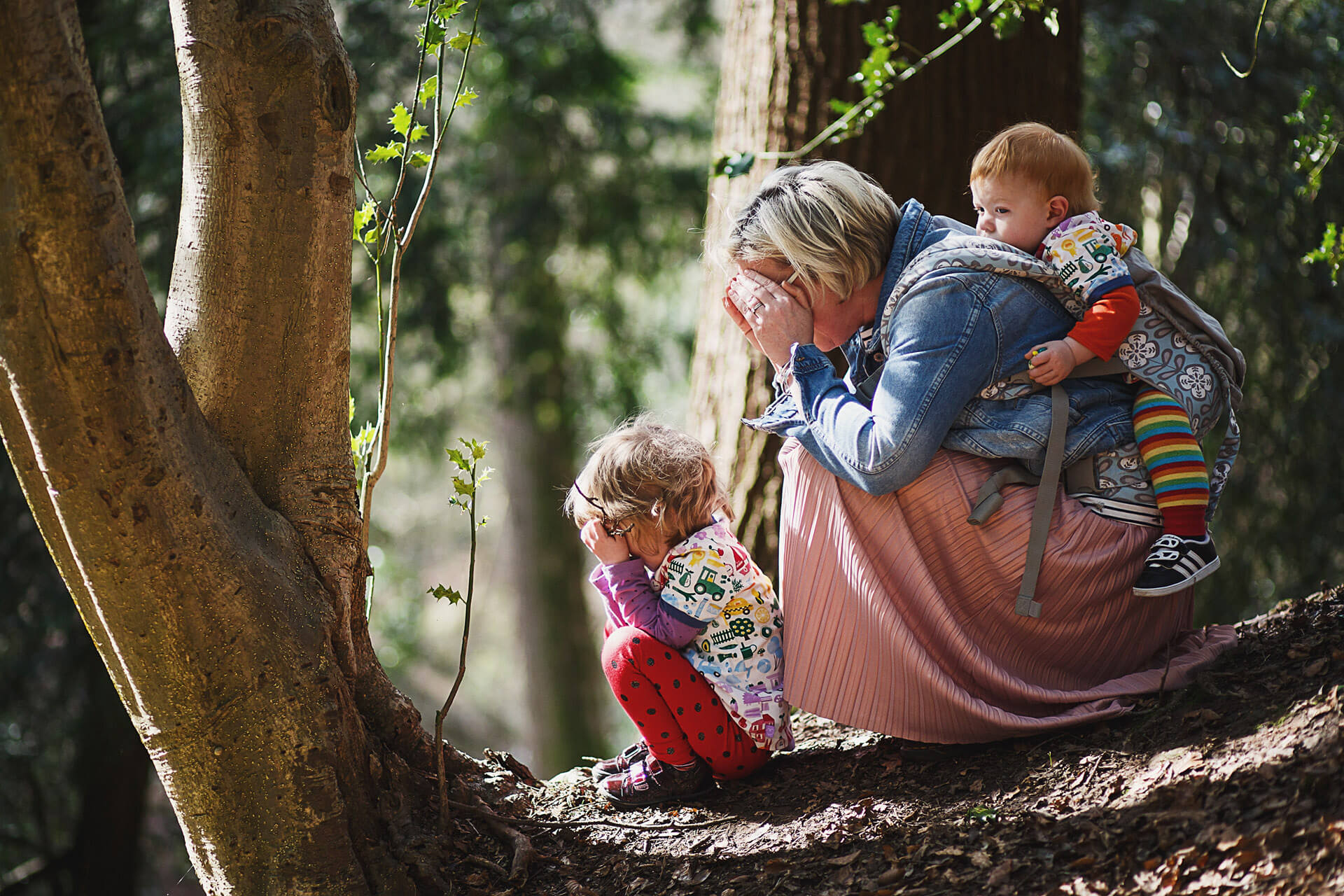
Anna shares how she uses authentic engagement to grow her business, and her top marketing tips. She also discusses how she balances photography with the mentoring side of her business.
Don’t miss Anna’s inspiring insights into how she has overcome marketing fears, and has created a methodology for marketing authentically which has helped her secure long-term success.
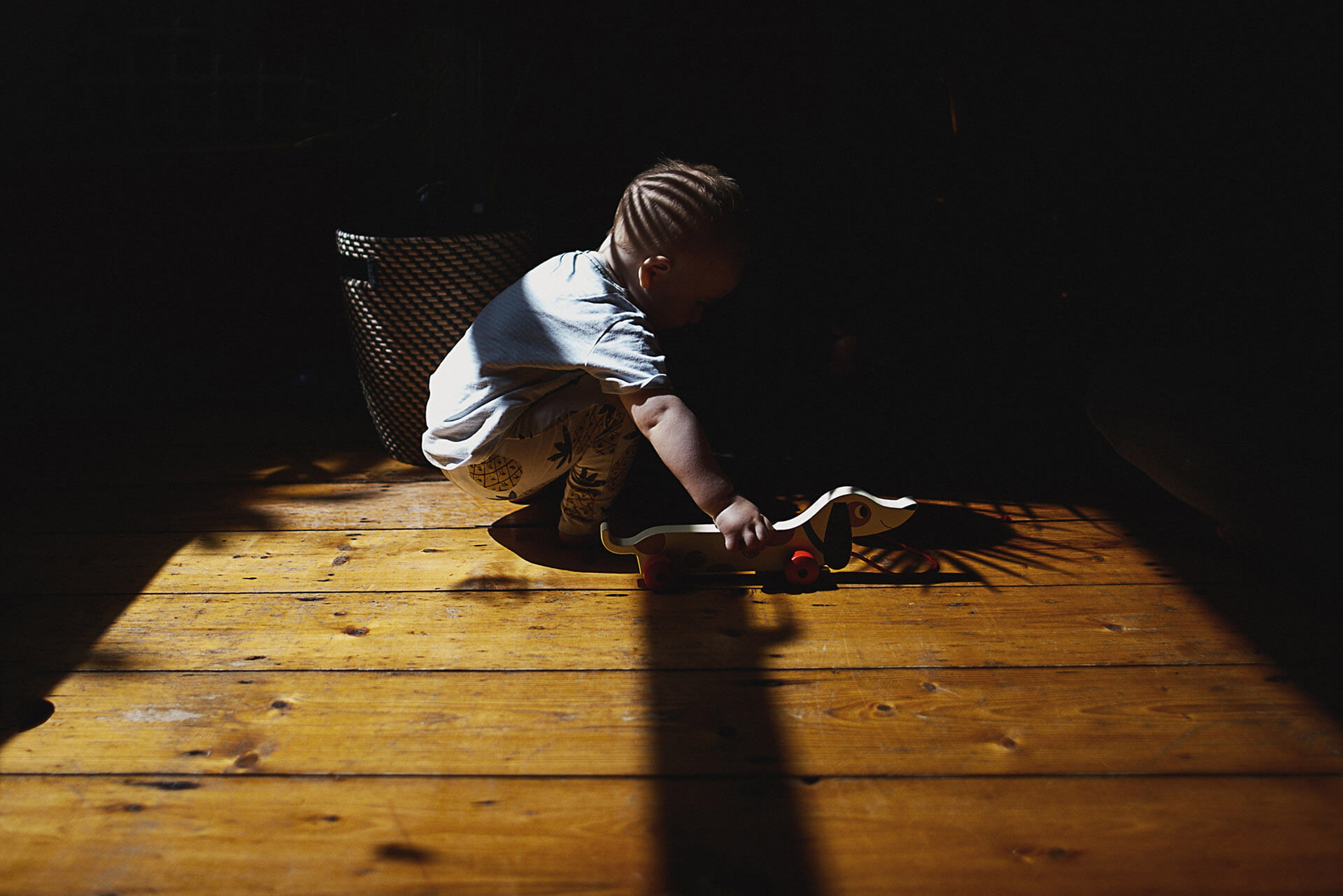
Listen to the interview and subscribe for more
Catch the interview with Anna Hardy here on my YouTube channel or click on the video below.
If you enjoy this, please like, comment and share on the video, and subscribe as there will be more photographer interviews, and interviews with photography industry experts in Season 2, coming in 2025!
Thanks must go to Anna for being so open and honest about her photography marketing and for revealing how she structures her business and has set it up for success.
She was so much fun to talk to and there is lots of great advice shared in this one. I hope you will enjoy listening!
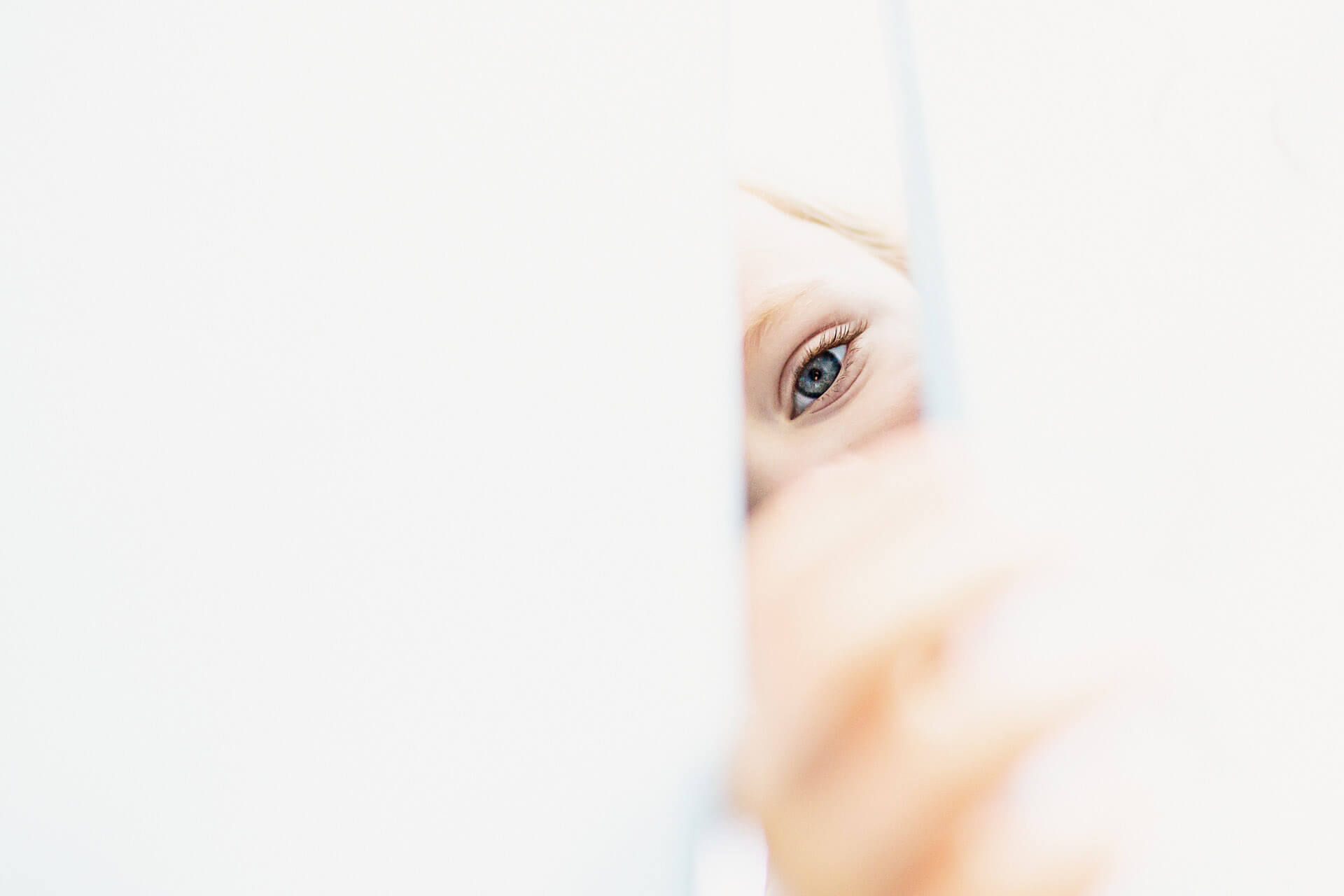
LINKS & FURTHER INFORMATION
Anna Hardy’s website
Anna Hardy’s Instagram
Anna Hardy’s Facebook Page
Janet’s book: The Photographer’s Business Guide
Video Transcript
Zoe: Today I have the pleasure of chatting with photographer Anna Hardy. Anna is a Manchester-based portrait photographer who works with down-to-earth adventurous families all across the Northwest and beyond. Her photography has been featured in print publications including Harper’s Bazaar and Digital Photographer Magazine.
She’s also a regular on the photography podcast circuit and speaks at photography industry events. In a previous life, she was a secondary school English teacher, but now with 17 years in the photography industry, she’s known as one of the country’s leading family photographers. Her days are filled working with families and kids brands.
She also runs workshops and mentors photographers, and she’s known for helping and developing them grow their businesses. In her own words, she’s a food obsessed, adventure loving mum of two, who loves diving out of planes for fun, exploring new places, and curling up with a good book. So, Anna, thank you for being here today.
Anna Hardy: Thanks so much for having me. It’s so nice to meet you. I’ve been subscribed to your newsletter for ages.
Zoe: Oh, have you?
Anna Hardy: Yeah, it’s really nice to finally put a face to a name. And, yeah, it’s really good. Well, yours is one of the few that I…
Zoe: Oh, wow. Thank you so much. Likewise. I feel it’s great that we’re finally chatting because I’m very aware of what you’ve been doing as well. And I’ve heard nothing but good things about you from other photographers I know.
So, as in the nature of this interview series that I’m doing, this is going to be all about finding out how you market yourself as a photographer. My intention is to help those listening or watching to find out some of the little insights and secrets that have played a part in your success.
I know, as I’ve mentioned in the intro there, you’re a very successful photographer, and then you’ve also dipped into the mentoring side in the almost past decade. So you’ve been doing both things simultaneously, but how did it all start? You were a teacher, but how did you get to that point where you’re like, right, I’m going to be a photographer now.
Anna Hardy: Yeah, kind of by accident, really. I was a secondary school teacher. I left to travel, but fully intending to come back to it. I had never taken any kind of pictures before at all.
And I took a little point and shoot camera with me to India. And then my camera broke while I was in Nepal. At the same time as a guy, who I met in India, had an SLR, a film SR, and I’d been messing around with his, and we were really enjoying taking some pictures. Then I got a tax rebate that came through at the same time as my camera broke, at the same time as being in Nepal where cameras were really cheap. So it was just sort of a bit of a stars align moment!
So I bought a film camera and travelled with that, and this makes me sound very ancient here, it was pre-digital. I just got the photos developed as I went around. So I had it in my backpack. It wasn’t very practical.
Zoe: Oh, I can totally relate! I’m as ancient as you then because I went travelling around the world for a year after university and used a film camera. I remember, either when I had some cash, getting the films processed as I went. Or, otherwise just packaging them up and shipping them home with a view to getting it all done when I got home. So I can completely relate.
Anna Hardy: Amazing. I’m so pleased. I’m not the only one!
It’s exciting using film as well because obviously, you’re just using different labs on the go. And some of them are shocking and some of them are good. But yeah, I’ve got all the negatives and I love it. Yeah, those images are really precious to me actually. And lugging them around was worth the extra backache definitely!
But yeah, so I got home and then shortly after that, I got pregnant with my eldest and so a combination of just the timing with the pregnancy and I couldn’t really go back into teaching, so I knew I was going to then be off.
So I just got a day job, just like an admin job really, with the NHS, just to pay the bills while I figured out what I wanted to do. But I’d really got the photography bug at this point. And I was thinking I’d really like to start a business. And I knew that teaching would just leave no headspace or practical time for anything else.
A day job will serve all purposes and help me build the business in the evenings and weekends. So I just did that, but yeah, cause obviously you have loads of spare time when you have a newborn!
So really, I kind of just built it while Joe, my eldest, who’s now 19, when he was a baby. And then went full-time in 2007, when Joe was maybe two. I just started taking loads of pictures of him as well. I don’t think initially I meant to make a business out of it until I then had Joe and just was obsessively taking pictures of him.
A friend started saying, “Oh, you should do something with that. The photos are good.” And then I thought, “Hmm, yeah, maybe I will.”
Zoe: That’s so relatable to so many mums out there. I know so many photographers who also started that way.
Anna Hardy: I think so many women in particular, I think feel like they’re not creative and they’ve maybe had a career and having children, it makes them reassess like what they want. Maybe their career, that they had before, doesn’t feel aligned with them having a family and they want to change that.
And also I think, when you have a baby, you sort of lose that identity a bit, don’t you? Cause you just become a mum and you’re feeding. So I think it’s a time of metamorphosis, I think for a lot of women, particularly. A lot of the photographers I know, like me, came to it having had children and wanting a change of direction and wanting to find their own creativity and identity again.
Zoe: Yes, absolutely. So you taught English, but marketing is so key, isn’t it? So it’s not just picking up a camera and having that passion for taking portraits, it’s actually promoting and marketing yourself. So, I mean, did you have any marketing background at all, or is that just something you’ve picked up along the way and you found things that work for you?
Anna Hardy: Yeah, definitely. And I hope this is reassuring to anyone who feels like a bit lost at sea with marketing. I had no marketing experience in terms of before I was a photographer. I was horrendous at marketing and really feared it. Honestly, I would say I was just really fortunate about the time that I started being a photographer because at the time there weren’t that many documentary-style photographers.
Again, I’m making myself sound really ancient here, but there also weren’t that many female photographers. So just by virtue of being female and not photographing, shooting in a formal style I found that I was probably able to get a lot more business without marketing myself so much at that time.
And I know a few other female documentary photographers who started around the same time, we all found the same. It was like our businesses did really well to begin with because just by virtue of this natural difference.
Zoe: Yeah, it was new and unique.
Anna Hardy: But then, as social media became more prevalent and, as quite rightly so, more women came into the industry and more people started shooting in documentary style, it just didn’t cut it anymore to not market. And so a lot of us, we found that we were just getting these bookings without really doing much to begin with. It was quite a rude awakening. It’s like, “Oh, we actually have to market ourselves!” And that definitely happened at least 10 years ago, you know, and now it’s just, like you say, it’s crucial. You can’t not do it.
Zoe: That’s so interesting. You’re saying that the conditions of the industry were so different even just eight, 10 years ago to what they are today, and so therefore it is far more challenging for everyone out there now.
Anna Hardy: Definitely. And 10 years ago, it’s like, okay, I know you really need to get your head out of the sand with this now and just get to grips with it.
And, I was one of these, it was like, “Oh, I hate marketing.” I really did loads of work on learning marketing and you still have like mindset…everyone has mindset issues around marketing, whether that’s money mindset or visibility or whatever it is that pushes your own particular buttons.
But it really is not as complicated, not as difficult, not as scary. And I think as you know, it’s just finding ways that feel right for you, and that work, and that are effective and then sticking with those. You don’t have to do every kind of marketing. I hate social media. I have an Instagram account I attend to very sporadically, but it’s just the icing on the cake. I do use it sometimes but…
Zoe: Yes, I noticed you had a bit of a gap with it, didn’t you? Because you posted saying I haven’t posted since March. So you’re not actually that consistent with it, which in itself is interesting. You’re not seeing it as a key piece of the pie. It’s just a nice to have.
Anna Hardy: I do use it, but if I got shadow banned or hacked it wouldn’t be the end of my business. It’s very much the cherry on top. It’s not what I rely on. It’s not my focus with my marketing at all. Cause I just don’t enjoy being on it.
Zoe: Yeah. Again, very relatable. And actually, I don’t provide social media services because, I mean I used to, but it’s just not my passion. And I don’t endorse that view that you should be on there all the time creating reels and chasing the algorithm. Instead, I believe that you should be working on much more sustainable long-term strategies. In my case, I suggest SEO and content and PR, but tell us about what you would choose.
What’s your way of marketing your business that works for you then outside of social media?
Anna Hardy: Yeah, I’m in total agreement with you. I think that that focusing on social media, as well as being exhausting even if you manage to do it, it’s just constantly shifting sands. The rules change all the time. It’s so unpredictable.
So yeah, like you, I prefer to focus on things that I feel are future-proofed and that I’m completely in control of. So the main one that I really love doing, actually (I never thought I’d say that about marketing because I always thought it’d be like a necessary evil that I had to tolerate) is my mailing list.
And I really love writing for my mailing list. I love writing anyway. I don’t enjoy being on video. I don’t enjoy various other things, but I do really love writing. So I’ve kind of lent into that. So my blog and my mailing list are where I can write more long-form content. That’s what I prefer.
And then I can repurpose. So my mailing list, I’m sort of religious with, I send an email every Friday to all of my mailing list. I segment into families and photographers because like you said before…
Zoe: …it makes sense.
Anna Hardy: So some people are in both. Not the same list, but different segments, but everyone, whether they’re a photographer or family gets I call it my ‘Friday Five’, which is a newsletter where I share five things that I’ve enjoyed that week. And it’s nothing to do with work. It’s just you know, food days out…
Zoe: I like that idea.
Anna Hardy: Yeah, and I think it’s good because it helps people to get to know you. But all that marketing is really isn’t it? It’s helping people to feel that affinity with you to get to know like and trust you and feel like, “oh, this is my kind of person”. “This is the kind of person I want to work with.”
And yeah, my ideal clients like food and books and things like that as well. So it’s a way to connect with them. It’s a way to show your voice as well. You can get your personality across more and I guess they’re all kind of salesy in that I have a ‘P.S’ section…
…”P.S. This is my availability and download my brochure”… So it’s there, but it doesn’t feel salesy. It’s a regular weekly update that hopefully provides value and recommendations, but then softly sells what I’m selling as well.
Zoe: Yeah, That sounds perfect. And I think just from looking at your website and seeing some of your social content stuff, the voice that you talked about that really comes across and it just sounds really fun. You know, you sound fun. And the voice and the images are fun too.
I think your tone of voice and your copy and everything is really magnetic. And I love that idea that you’re doing more personality-led content, because that is important. And I think you’re totally right. You need to still get your sales promotions in there because I think a common pitfall with content creation in general is that you almost do too much of one thing. How to content or personality-led content for example, but then forget to sell.
But I love that personality-based approach, and that’s obviously working for you. It’s brilliant that you’ve kept that up as well because once a week is pretty tough as a schedule to keep up with when you’re busy.
Anna Hardy: It is. I try not to do them on a Friday. I try and do it on a Thursday evening. So I’ve got that full week’s worth of stuff that has happened. I do it on a Thursday or often if I haven’t managed to do it on the Thursday, it’s written and sent out on the Friday that it goes out. There’s been a few times it’s been like 4 p.m. on a Friday, or 5 p.m., and I’m like, “send!” And then I’ll relax.
Zoe: But hats off to you, you’ve kept up with it. And I think you wouldn’t be alone there creating content at the last minute. I sometimes work on my newsletters and things on the same day. I sometimes even just send it out within half an hour of completing it.
I always delay it though. So I don’t ever hit send straight away because, I don’t know if you find this, but when you walk away, maybe make a cup of tea or something, come back and read it with slightly fresher eyes. You might spot something or think it better to say something in a slightly different way. So yeah, that’s another tip on the email marketing side…always delay it by a certain timeframe so you can tweak if you need to.
But, yeah, let’s be real. Last minute content creation is the reality, isn’t it for many people?
Anna Hardy: Yeah. And I think although it’s kind of hassley in that respect, it’s paid off so much. Every time one goes out, I get a little flurry of brochure downloads. Every time one goes out, I often get a reply saying, “Oh, I really enjoy these” or, “it’s brilliant”.
Yeah. It’s worth it. It’s definitely something that from a business point of view, I feel that it really pays off. And just from a personal point of view, I genuinely do actually enjoy writing them. And I think that, you’re not going to be consistent with something (which goes back to like what we were saying about social media) if you don’t enjoy it.
You won’t because it’s not easy to be consistent with things. You’re basically just fighting a losing battle if you’re trying to be consistent with something that you don’t enjoy. So do yourself a favour and make the thing that you’ve got to be consistent at something that you actually enjoy doing. Even then it’s going to be a pain sometimes, but…
Zoe: …Yes, consistency is really hard. And I’ve fallen off the wagon so many times with, my blog routine or my newsletters, as we all do. But as you hopped back onto Instagram, there’s no shame in missing a day, a week, a month.
So equally, I think nowadays consistency is really important, but not to the point where the world is going to end if you don’t continue. Because, I think, as you’re creating all this amazing content, hopefully, it’s leading to enquiries and sales, and then of course you’re busier behind the scenes as a result.
So unless you’ve actually got a team behind you helping, it’s just another thing on the to do list, isn’t it? In that busy phase, how’s your business structured? Is it literally just you? And have you got any support at all in the business?
Anna Hardy: So it’s, it’s largely just me. I have a brilliant accountant I just love her. She’s helped me feel a lot more in control of the business because numbers aren’t my strong point. Finance is definitely not my area of expertise, so I have her.
But, also in the last two or three years, mainly since I’ve been doing the education work, I do have a VA, a virtual assistant, Kerrie-Ann. She is brilliant. She actually lives in Spain, and she does a lot, she takes a lot of the admin tasks off me.
I maybe wouldn’t have needed a VA necessarily if I was just doing photography. But in terms of outsourcing, whatever you can, because it’s like the more you have to work on admin and client work, the less time you have to spend on the marketing and growing your business. So whether that looks like outsourcing your accounts to an accountant or outsourcing, your editing to AI or a human editor or whatever it is, there’s definitely things that I think photographers can use a VA for.
Certainly for things like repurposing content…I got her to transcribe content that I’d already created and then make it into snippets and things like that. So definitely photographers could do that. And you might feel like you’ve not got the money in the business to do that, but it gives you the time to earn more money in the end. So can be a bit of one of those sort of chicken and egg situations.
I really resisted it for ages, but actually it enables me to focus on growth tasks much more than operational stuff.
Zoe: Yeah. That fear of, “Oh, can I afford this person?” is a real and valid concern. I know that when people are considering working with me, there’s naturally that element of resistance…that fear of “Oh, what, A, if it doesn’t pay off, but B, can I actually maintain the fee level”, et cetera. But I think, yeah, you do ultimately need to just make a leap of faith and hopefully with any VA or whoever it is that you outsource to, you’re not committed long-term. You can take it steady and then you can opt out if you need to.
But I think like you said very much so that it frees up your time to do more income generating tasks. And so that investment into an additional service means that if you just maybe do one more session a week or something, it covers the fee.
And presumably, that takes the weight off you in terms of the pressure and the internal mindset pressures of running a business and trying to juggle all the things. Because you have got essentially two different businesses here that you’re running, haven’t you?
Anna Hardy: Yeah, that’s it. And I mean, one thing that she really helped with, which is directly linked to marketing and SEO, that we were talking about, is I actually send a second email each week as well which is just for photographers, which is Tuesday Tips.
So it’s just like a free tip on a Tuesday, just something to do with photography. So in the interest of repurposing, cause I want content on my blog that’s SEO’d, but I also want content for my mailing list… So what I would do is create it for my mailing list and I tried to hold myself accountable by calling it “Tuesday Tips”, like you have to do this on a Tuesday.
So I create it for my mailing list, but then I would then send that email to Kerrie-Ann and ask her to put it into a blog post and SEO. The writing I don’t want to outsource because I want that to be me, but actually copying and pasting stuff over and formatting and all the rest of it doesn’t have to be me.
So, yeah, blog posts with SEO, then obviously bring more traffic in. So, that’s something that I’ve really found her useful for to take that off me is that building my blog and SEO, which is alongside the mailing list.
The blog and SEO, and the mailing list, are the two biggies really. Well, two of the three biggies… I’d say the third one is like personal connection and collaboration, which…
Zoe: …which you wouldn’t have a business without. And I say that to photographers as well because for all the amount of times I go on about content (and this is music to my ears to be honest, it’s what I’m always telling photographers to do…repurpose what you’ve got, don’t make it harder for yourself).
And you’ve just described the process that I also do with clients. They might have an archive of social media content, for example, but actually if Instagram closed down tomorrow, they haven’t got a record of it. So I very much help clients to repurpose that and, as you say, reformat it into longer form blogs and make things SEO-friendly so that they are benefiting from it as well in terms of organic traffic.
But yeah, it’s so important to do that because otherwise you’re just spinning plates. And no wonder if you fall off the wagon with things! Particularly if you aren’t in love with doing these kinds of tasks anyway. I think what you’re describing though is a passion for writing, which again, a lot of photographers don’t unfortunately have.
So what would your advice be if someone doesn’t love the writing side? I think you and I share that love of writing, but it is tricky, isn’t it? If people don’t…they just genuinely want to pick up a camera and do the work they love, which is photography. What would you say to someone like that? Have you mentored anyone who was really resistant to the marketing side?
Anna Hardy: Yeah, I would say like most people dislike the marketing side. It’s so common and I mean that not as a criticism, but as reassuring. I’m well aware that I’m lucky to enjoy that and not everybody does.
So…practical tips if you are struggling to write things is, I think, number one, people don’t need it to be perfect. They want it to be relatable. So it doesn’t matter if there are spelling mistakes or the grammar isn’t right. People don’t really care about that. So I think try to release that feeling of having to create perfect content.
But two tools that I often advise people to use if they want to create some content is to either use free writing, which is where you just like set a timer for say 20 minutes and you just have to keep writing with a paper and pen…like brain dump all your ideas. It doesn’t have to make sense. It will be gobbledygook. But then from that you’ll have some little nuggets that you can then build on.
Or, the other thing is to just talk about the topic and then transcribe it. Use something like Otter and that can help people as well who feel like they often go into formal business speak when they start to write…
Zoe: It’s what we were taught at school, isn’t it? That formal style of writing was drilled in, wasn’t it? And also the importance of getting the grammar right, getting everything perfect, but it can hold people back.
Anna Hardy: Definitely. That fear of error, I think holds so many people back. And I would say like, find the thing that feels most comfortable to you. So actually for some people, they might be more comfortable making a little video about something or they might be more comfortable just recording their voice and then you can transcribe that. Or you might feel more comfortable writing about something that’s just more practical. So say for example, you’re like really into gardening or cooking or exit, your ideal clients will probably, that will still be useful to them.
It doesn’t necessarily have to even be about photography and that will help to differentiate you. So don’t just maybe just start creating content about something that you find interesting in a format that you feel that you don’t hate – the one that you feel most comfortable with and just start creating some content with that.
And then you can build on that and repurpose it. Create a for-now system and then bullet point a gold-standard system that you want to work towards. And then you can just gradually get there. I think sometimes people feel paralyzed because they think, well, this is what I should be doing…the gold standard thing. And the jump is so big from where they are to that, so they just don’t do it because it’s too intimidating.
So think like, what could I do now that feels doable, achievable, even if that’s just once a month? And then build on that and just start taking steps towards it.
And like anything, once you start doing it and start putting one foot in front of another, you’ll find you’ll get into your groove with it. You can build on it. You don’t have to do everything now, but just start making little steps in that direction.
Zoe: Yeah, I think that’s such sound advice and I believe that too. Ultimately have a vision for where you want to be – I think is important so you know where you’re trying to get to, as you’ve said – and then just do something.
And, actually, I say this quite a lot…that marketing is really just an experiment because the market conditions change constantly. The social media algorithms change, you know, the benchmarks change. So actually what might’ve worked five years ago or 10 years ago, as we’ve said at the start of this chat, is not going to work today. The people who are doing marketing that seem to work, have just had the bottle to actually try something new or to just keep going much of the time.
And yeah, we all experienced imposter syndrome and fear. Whether what we’re doing is the right thing…but actually having the bottle to do it, I think is key, isn’t it? Just try new things.
Anna Hardy: Definitely. I agree with you completely. I think approach it with a spirit of experimentation and curiosity rather than getting it right. Like you say, there is no getting it right. I’ve done some marketing campaigns that the first time I’ve done them, it was just crickets. It doesn’t work. And then I’ve maybe just done the exact same thing a few months later and it really worked and vice versa.
And sometimes you don’t always know why things work or why they don’t, but you just have to kind of go, “okay, never mind. That was disappointing.” We all do marketing that falls flat. It happens to everyone.
Zoe: And I think what can work for one person doesn’t necessarily translate for another. So that’s hence the reason why it’s not advisable to just copy someone else’s approach or their content style or what they seem to be doing. Because actually you don’t know what’s going on behind the scenes. You don’t know if they’ve got a team of people that are churning out all this content. And then you’re stressing yourself out trying to replicate, or keep up with the same level of momentum.
It’s so important to have that understanding of, like you’ve said…this is what I like doing. This is what I can feel comfortable doing. And this is what I can probably stick to. Whilst at the same time , obviously, we’re both saying really, you should push your creative boundaries and try and do things that push you out of your comfort zone as well.
Because I think when I see photographers just doing the same old same old, and then wondering why it’s not working and not trying new strategies as well. I think moving with the times is really important.
There are so many people in this industry who have been in it for decades, multiple decades. And I think it’s a hard lesson to learn…that what you used to do does no longer cut it. So yeah, it’s hard, isn’t it, in business tokeep things fresh, but it is important.
Anna Hardy: Yeah, definitely. And I think what you just said is really key. I think one of the biggest business lessons I’ve learned over the years was…for years, I was frustrated and thinking “why don’t I feel okay about marketing?” or “I want to not feel scared about marketing.” What I’ve realized now is that if you wait for a time when you feel confident and that fear or trepidation goes, welll it probably won’t and you’ve got to just get comfortable with feeling uncomfortable. Think “I don’t feel completely comfortable doing this but i’m just going to give it a go anyway”. Confidence comes from action, not the other way around.
I think often you wait to feel confident to take the action, but it just doesn’t really happen. And sometimes you have to take action whilst not feeling confident to build the confidence. And so a lot of it is just accept that. Whilst you might look at other photographers and think, “Oh, they’re so confident doing writing there for their mailing lists or creating blogs or posting on social media”…they probably aren’t really feeling confident when they do it. But they’re just doing it anyway.
Zoe: We’re our own worst critics, aren’t we? So I think it is very easy to criticise ourselves and what our output is in terms of content and think it’s not good enough. Yes, we all do it.
So, let’s now talk about your press coverage. You’ve spoken on podcasts and you’ve developed a name for yourself in the industry naturally through what you’re doing, but can you tell us a little bit more about your press and PR. How, how your press coverage has come about over the years?
Is that achieved from pushing yourself to approach editors proactively? Or, how have your features and things developed? And what have press articles and features done for your business?
Anna Hardy: So I’ve been fortunate in that a lot of them I’ve been approached, however, I think they found out about it because I’d put stuff out there. So although a lot of the time people have asked me, “could I use this article” or “do you want to”… you know, it’s not come from me just sitting at home, hoping that someone will knock on my door.
I put the content out to try and meet people. It’s forging those relationships with other people in the industry and chatting to people and just trying to build genuine connections and create genuine content. That said proactive PR is very much on my never-ending to-do list. It’s something I really want to lean into more because approaching people is massively out of my comfort zone. Pitching for things, that’s really out of my comfort zone. I’m happy saying yes to things when people approach me, but pitching it makes me go….
And so I’ve really forced myself to do it. It so pays off. PR well, I don’t need to tell you this, but it’s massive! Because I think what I’ve learned with marketing is a huge amount of it is all about the size of your audience. You could have like the best product, be the best photographer with the best brand and the best photos, but if no one knows about you, only a certain amount of your audience is going to enquire, only a certain proportion of them are going to book.
So if you’ve got a small audience and you’re just constantly posting to like the same five friends you’re just not going to get the bookings. It’s not that you’re not good enough. Your audience just isn’t big enough.
And building your audience can be a really hard, painstaking thing to do organically. So actually using other people’s audiences is the best way to get introduced to a lot of people. It also builds that trust. It’s like being introduced by a friend at a party. If you walk into a party on your own and go, “Hi, I’m Anna. I’m really great”. Whereas if it’s like, “Oh, this is my friend, Anna. She’s really nice” then people are more open to trusting you and connecting with you.
So anything where you can be featured on someone’s blog or talks…it gives you credibility. It builds an audience. You’re in front of a load of people you wouldn’t have been able to reach otherwise.
It’s definitely an aspect of marketing that I really want to lean into more moving forward and I’m trying to build confidence with around pitching for sure.
Zoe: Oh, well, interesting. Maybe we should have a chat! But, everything you’ve said there is, well, I couldn’t say it better. It’s the authority building, its expertise being naturally conveyed through content rather than an advert, just trying to pitch to people. And yeah, you build that trust and awareness and all the good stuff. So yeah, I’m super passionate about that, obviously.
But those are fantastic tips for getting involved and growing your audience. That is so important, as you say, and PR does all of that.
So yeah, really sound advice there. Anna, you’ve shared so many practical tips and really interesting things. I’m sure anyone listening and watching is going to find this so valuable, so thank you so much.
Before we wrap up, is there anything you’re working on at the moment or what you’re doing behind the scenes that you want to share with us?
Anna Hardy: Well, I’m actually in the middle of a beta group at the moment. I’ve created a new program called The Greenhouse, which is for family photographers wanting to make a consistent full-time income, basically.
And so it’s a group program and we’re halfway through the beta. So I’ve had a little group of 10 beta testers who are currently doing it. So I’m really excited about that and it feels like it’s the culmination – I’ve done lots of different things – like the sweet spot of all. Yeah, it feels really good.
So I’m just in the middle of finishing off the content for that. I want to make sure it’s right. I’m getting lots of feedback from the beta testers and hopefully we’ll then launch that in the new year. So that’s mainly what I’m working on at the moment.
And, but I also just want to overhaul my family system. So The Greenhouse, that’s the education side, but as a photographer, I’m definitely at the point where I’ve not updated my brochure in a while. I’ve not updated my systems, so the things that I send out, I feel like it needs a bit of an update.
Zoe: Well, it needs doing every now and then, doesn’t it? How busy are you at the moment? I mean, have you got any quiet time coming up? The start of the year perhaps is an ideal time for all that. However, when is it ever quiet enough to focus on these things? It’s difficult, isn’t it?
Anna Hardy: That’s it. No, it is typically a quietish time. It’s actually quieter than usual. It’s busy enough but I think this year it seems quiet.
Zoe: I’ve heard that as well, so you’re not alone with that. And I think that will comfort some people who might be scratching their heads wondering why the diary’s not filling.
Anna Hardy: Oh good. Yeah, it’s definitely quieter for me this year than it would normally be. Yeah, it’s tough, but I am trying to get some irons in the fire for the new year. If you’ve got a quiet season, rather than sit there doing nothing think “how can I incentivise booking during these quiet times?” So yeah, that’s what I’m working on…A bit of an overhaul, the new programme, tart up my family system a little bit. A little update.
Zoe: Well, good luck with all of that and with the remainder of the beta program. And obviously, everybody can check out your website – I’ll share the link.
So, thank you so much, Anna, for sharing all of that and for all your wise advice it’s been wonderful to chat with you.
Anna Hardy: Oh, thank you so much for having me. It’s been really nice, really lovely to chat and yeah, to say, to finally put a face to the name that I’ve been getting in my inbox for ages. Thank you for having me.
Zoe: No problem. Thank you so much.
